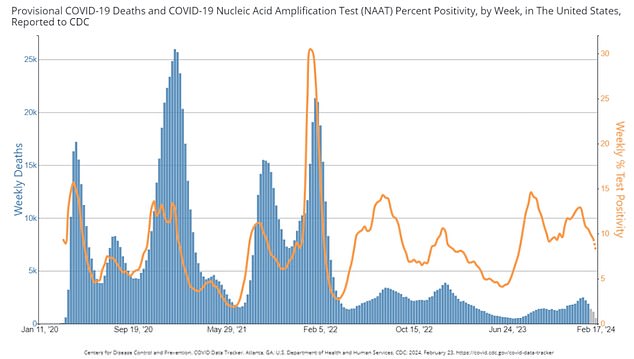Fear reigns on social media platforms of a “mystery virus” that has caused Covid-like symptoms, despite many testing negative for the virus, as well as flu and RSV.
People have described being sick for weeks with high fever, nausea, difficulty breathing, loss of sense of smell, and fatigue.
But health experts say the virus is less mysterious than it is made out to be online. There are viruses circulating at all times of the year, and this “mystery virus” is probably one of the common seasonal diseases that were suppressed during the Covid pandemic.
There is believed to be a double effect at play. People are hypersensitive to their own health after the pandemic, and our immune systems were weakened by things like lockdowns and working from home, when we weren’t exposed to germs, which made illnesses seem more brutal.

The current testing positivity rate is approximately eight percent. While that rate has been declining, immunologists are still concerned about its circulation in the community, citing evidence in wastewater samples.
While thousands of people called their illness a mystery virus, the reported symptoms don’t necessarily overlap. Some have compared it to a Covid-like respiratory infection, while others have described symptoms consistent with strep throat.
Marcus Plescia, medical director of the Association of State and Territorial Health Officials, said The hill: ‘The symptoms that are described are quite consistent with, you know, many viruses that are not “mystery viruses,” which are things that circulate year-round. The common cold is one of them.
An increase in other respiratory infections concurrent with Covid and flu is expected with the season, and with more people socializing in person, the spread of an infectious disease becomes much more likely.
And since Covid has been a major health problem for years, it’s also likely that people have, to some extent, forgotten that there is an exhaustive list of other infections that could appear throughout the year.
Dr. Georges Benjamin, a longtime physician and executive director of the American Public Health Association, said, “There is a collective amnesia of what life was like five years ago.
‘RSV is gaining a higher profile and more billing in conversations because there is a vaccine for it. And we still don’t have a vaccine for the common cold. And again, it’s almost 200 different viruses.”
He added: “I would caution them that this is cold and flu season, and this is consistent with what we see in cold and flu season.”
A TikTok user describes his illness saying: ‘I was sick a few weeks ago for about two weeks. The first four days were absolutely terrible. I took the Covid test, I took the a and b flu test, I took the strep test and I came back negative for everything twice.
‘I had a fever, almost four days in a row, I was super congested, I was short of breath, I lost my sense of smell. Everything you would think of when you have covid or the flu. I was also very dizzy and lightheaded a lot.’
Other saying: ‘Does everyone have the virus that is circulating in the United States right now? The one with a sore throat that hurts no matter what you drink, the constant mucus that chokes you in the middle of the night, the severe earache, the migraines, the body aches that make you feel like you just played a game. basketball game and you didn’t have subs. Were they called by you? Fever, chills?
“You know, basically, strep, flu, a normal cold, and bronchitis, basically all mixed together?”
Some experts have suggested that, contrary to what many say, Covid could be to blame. Many are quick to remind people on social media that the virus is still circulating in the United States, albeit at much lower levels than in previous years.
A new strain, JN.1, entered the radar of public health experts earlier this year and accounted for about 83 to 88 percent of all circulating variants by the end of January.
Dr. Zachary Rubin, an immunologist with expertise in allergies and asthma, saying: ‘It’s probably not a big mystery because people haven’t talked about it lately, but Covid-19 is still circulating at high levels throughout the United States.
‘We see high levels in wastewater when people go to the toilet. If you eliminate that virus, we can take samples to see what’s happening in the general population, even if people don’t get tested for it.’
He added that many people use home diagnostic tests, which can give false negative results. It is best to get tested several times over 24 to 48 hours or get a PCR test in a doctor’s office.
“So this is still something that’s going around out there, causing people to not only get sick, but get very sick and have persistent symptoms.”
At the same time, Covid test positivity rates are the lowest in weeks. According to data from the Centers for Disease Control and Prevention, about eight percent of Covid tests came back positive in the last week, up from 9.7 percent two weeks ago and 10.2 percent three weeks ago.
The explosion of testimonies about the worrying mystery virus is directly linked to pandemic-related anxiety and the spread of dubious health claims, according to Callum Hood, head of research at the Center for Countering Digital Hate.
He said: “Social media has failed to address the repeated waves of health misinformation during the Covid pandemic, and has had a lasting effect of creating distrust of real medical experts while also spawning a new generation of online charlatans.”

